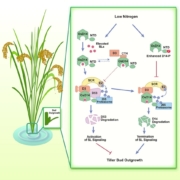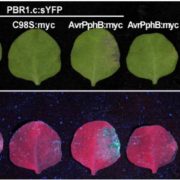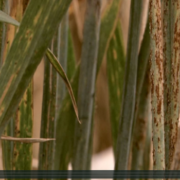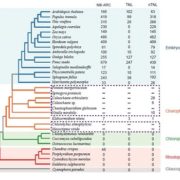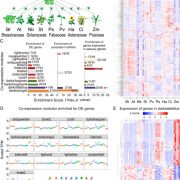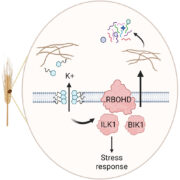The fate of scent in insect- vs. wind-pollinated flowers ($) (Ann. Bot)
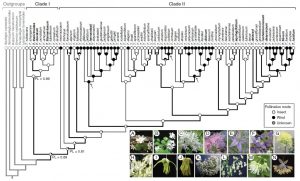 Flower traits (mainly flower colour, position, shape, size, reward and scent) in present-day plants are the result of past selection pressures. Among these traits, scent is a crucial component mediating pollinator attraction, and is often greatly reduced in abiotic-pollinated plants. Wang et al. characterize the volatile organic compounds (VOCs) in very closely-related species from the genus Thalictrum that are either insect- or wind- pollinated. Their results show that there is no clear scent ‘signature’ of a pollination mode, and the VOC profiles were independent of phylogenetic relationships. However, the VOCs of insect-pollinated species were able to elicit a response in potential pollinators while VOCs of wind-pollinated species failed to do so. In conclusion, the authors propose a scenario where the ancestral pollination mode of the genus is insect-mediated and some species transitioned to wind pollination. In insect-pollinated species, the scent’s capacity to attract pollinators is maintained by pollinator-mediated selection. When the studied species transitioned to a wind pollination, this selective pressure was released, and scent lost its ability to induce pollinator responses. (Summary by Mariana Antonietti) Ann. Bot. 10.1093/aob/mcy131
Flower traits (mainly flower colour, position, shape, size, reward and scent) in present-day plants are the result of past selection pressures. Among these traits, scent is a crucial component mediating pollinator attraction, and is often greatly reduced in abiotic-pollinated plants. Wang et al. characterize the volatile organic compounds (VOCs) in very closely-related species from the genus Thalictrum that are either insect- or wind- pollinated. Their results show that there is no clear scent ‘signature’ of a pollination mode, and the VOC profiles were independent of phylogenetic relationships. However, the VOCs of insect-pollinated species were able to elicit a response in potential pollinators while VOCs of wind-pollinated species failed to do so. In conclusion, the authors propose a scenario where the ancestral pollination mode of the genus is insect-mediated and some species transitioned to wind pollination. In insect-pollinated species, the scent’s capacity to attract pollinators is maintained by pollinator-mediated selection. When the studied species transitioned to a wind pollination, this selective pressure was released, and scent lost its ability to induce pollinator responses. (Summary by Mariana Antonietti) Ann. Bot. 10.1093/aob/mcy131


